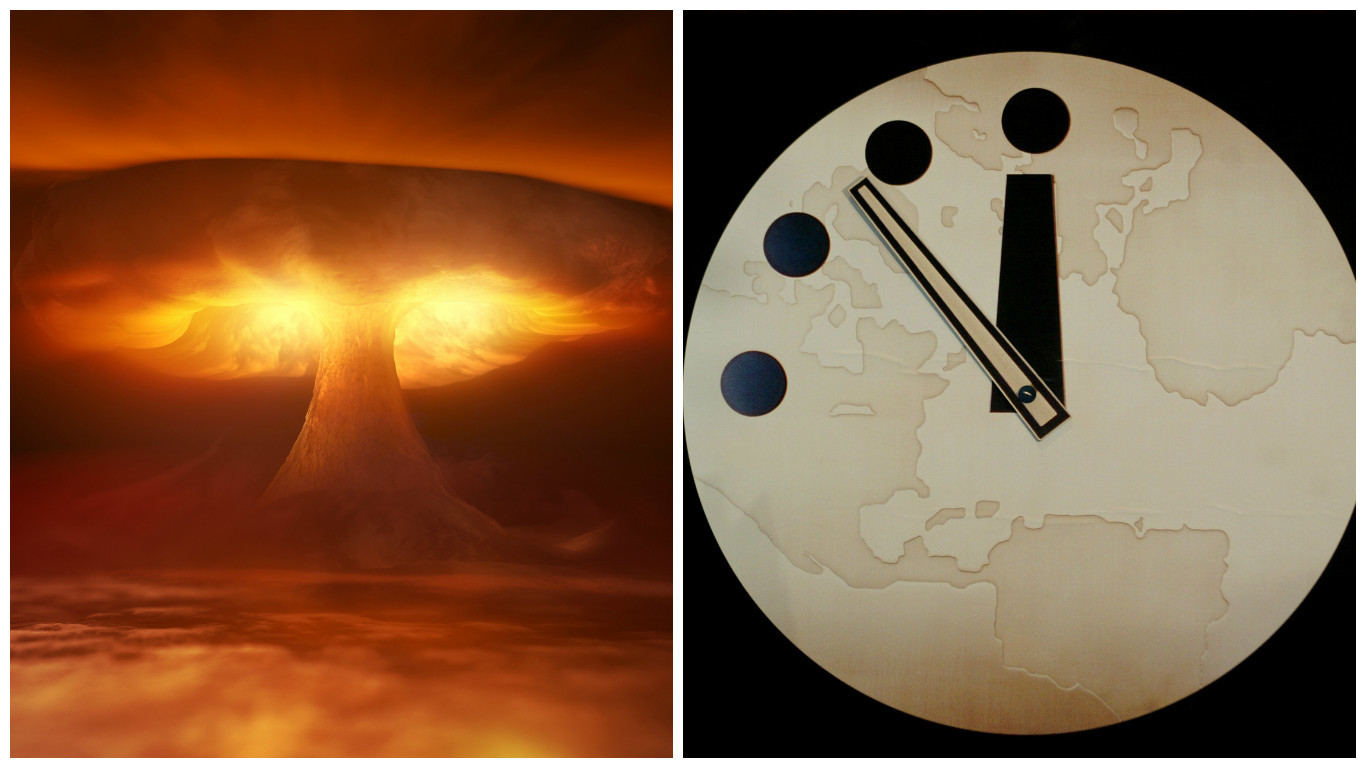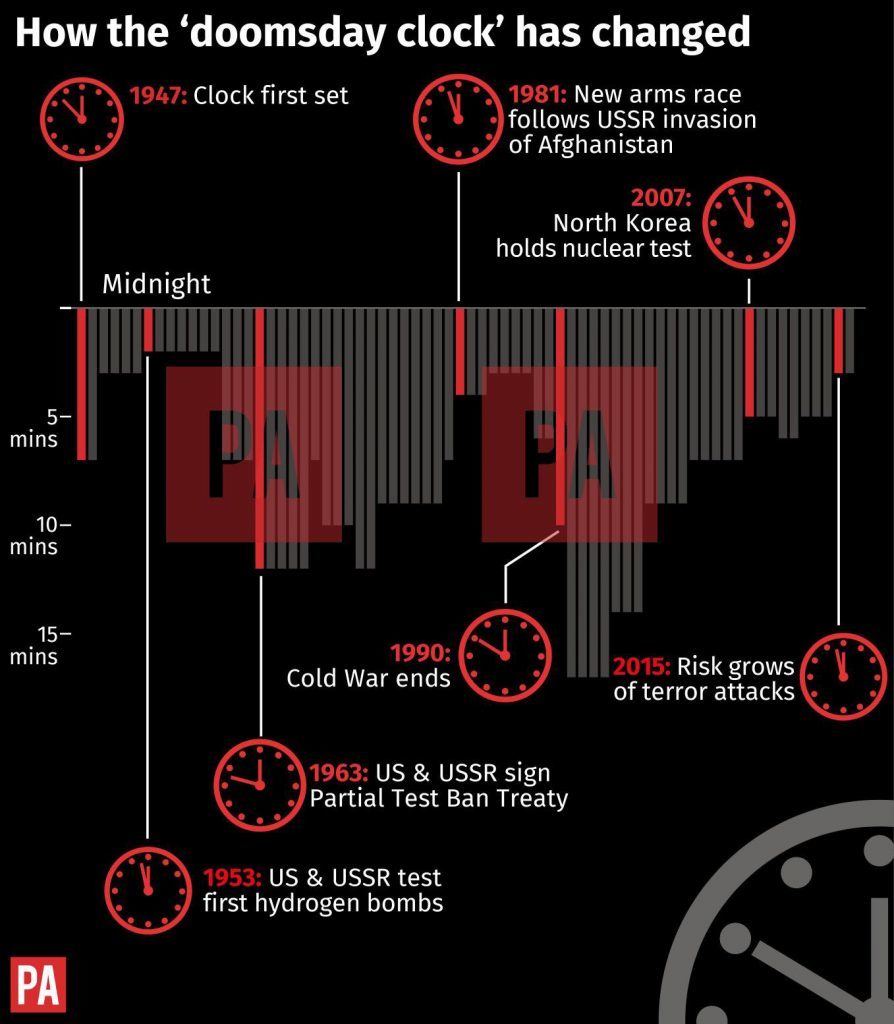
A DOOMSDAY Clock symbolising the threat of apocalypse could be about to move closer to midnight.
Leading scientists who are the clock’s keepers will announce the new “time” in an event to be streamed later this afternoon.
With the state of the world as it is, they may well decide that global catastrophe is only a minute or two away.
In 2015 the Bulletin of the Atomic Scientists, an expert group formed in 1945, adjusted the Doomsday Clock two minutes forward and took it to three minutes to midnight.
That sent a message that the Earth was closer to oblivion than any time since the early days of hydrogen bomb testing and 1984, when US-Soviet relations reached “their iciest point in decades”.
Last year the clock’s hands, which have moved forwards and backwards in different years over the past decades, remained unchanged.
A statement accompanying the 2016 Doomsday Clock decision read: “Three minutes (to midnight) is too close. Far too close.
“We, the members of the Science and Security Board of the Bulletin of the Atomic Scientists, want to be clear about our decision not to move the hands of the Doomsday Clock in 2016: That decision is not good news, but an expression of dismay that world leaders fail to focus their efforts and the world’s attention on reducing the extreme danger posed by nuclear weapons and climate change.
“When we call these dangers existential, that is exactly what we mean: They threaten the very existence of civilisation and therefore should be the first order of business for leaders who care about their constituents and their countries.”
The Bulletin was founded by concerned US scientists involved in the Manhattan Project that developed the world’s first nuclear weapons during the Second World War.
In 1947 they established the Doomsday Clock to provide a simple way of demonstrating the danger to the Earth and humanity posed by nuclear war.
Today the Bulletin is an independent non-profit organisation run by some of the world’s most eminent scientists.
The Doomsday Clock now not only takes into account the likelihood of nuclear Armageddon but also other emerging threats such as climate change and advances in biotechnology and artificial intelligence.
Last month the Bulletin dropped a strong hint Doomsday might be about to edge nearer.
In a statement the scientists said: “Tensions between the United States and Russia that remain at levels reminiscent of the Cold War, the danger posed by climate change, and nuclear proliferation concerns, including the recent North Korean nuclear test, are the main factors influencing the decision about any adjustment that may be made to the Doomsday Clock.”
The closest the clock has ever come to striking midnight was in 1953, when the time was set at two minutes to 12.
It was in that year that the US took the decision to upgrade its nuclear arsenal with the hydrogen bomb, “a weapon far more powerful than any atomic bomb”.

Enjoy the convenience of having The Sunday Post delivered as a digital ePaper straight to your smartphone, tablet or computer.
Subscribe for only £5.49 a month and enjoy all the benefits of the printed paper as a digital replica.
Subscribe